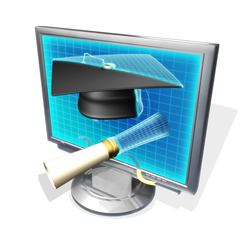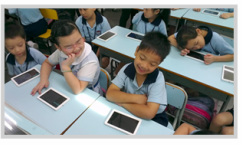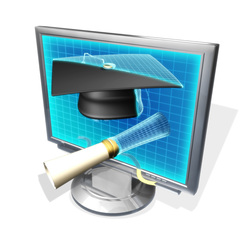
My name is Angela Burgess. I obtained my Associate of Arts degree from Young Harris College in 1997 and my Bachelor of Science in Foreign Language Education from the University of Georgia on May 13, 2000. Fourteen years later, to the day, I obtained my Masters of Education in Instructional Technology from Kennesaw State University. Currently, I am a French teacher and assistant Instructional Technology Specialist (ITS) at Lambert High School. In the past, I have also taught 10th Grade Literature and Composition, as well as serving as a Creative Director for the Lambert Dance Company (LDC).
Do you know the word used to describe graduation ceremonies? "Commencement" comes from the French verb commencer, which means "to begin." This is because graduation marks not just the end of a set period of studies and educational endeavors, but also the beginning of a new path in the graduate's life. Just as my current seniors are about to take the fork in the road that leads to college, the military, or a career, I am also preparing for the next twist in my path.
In my case, that path leads out of the classroom and into an office. Beginning next year, I will be the full-time ITS at my school. While I will still work with my same colleagues, it will not be the same. My interaction with students will be limited to my work with LDC and to those times when teachers ask me to assist them with technology in their classroom. I have not had a day in my life since I was 8 years old where I did not speak, read, write, or listen to French in some way. I don't know what a monolingual life looks like. I am hoping to keep my French muscles flexed by tutoring and perhaps teaching online, but I am scared at the prospect of letting go of my life's work up to this point.
At the same time, I am excited by the prospect of new challenges and new responsibilities. I am nervous about not living up to the expectations of my co-workers, about letting them down, and about all of the things that I do not yet know to be nervous about. I worry about losing touch with my life as a classroom teacher and the stresses that daily classroom life brings. I try to tell myself that I will enjoy not bringing home papers to grade, but then find myself bringing home ITS work home, so maybe that part of my life will not change.
There will be changes at this blog as well. Now that I have graduated, posts here will be few and far between. If you are interested in continuing to follow my new path, send me a message and I'll be happy to share other ways to follow me. To anyone reading this, I wish you the best of luck as you continue your path.
Bonne chance à toutes et à tous!




 RSS Feed
RSS Feed
